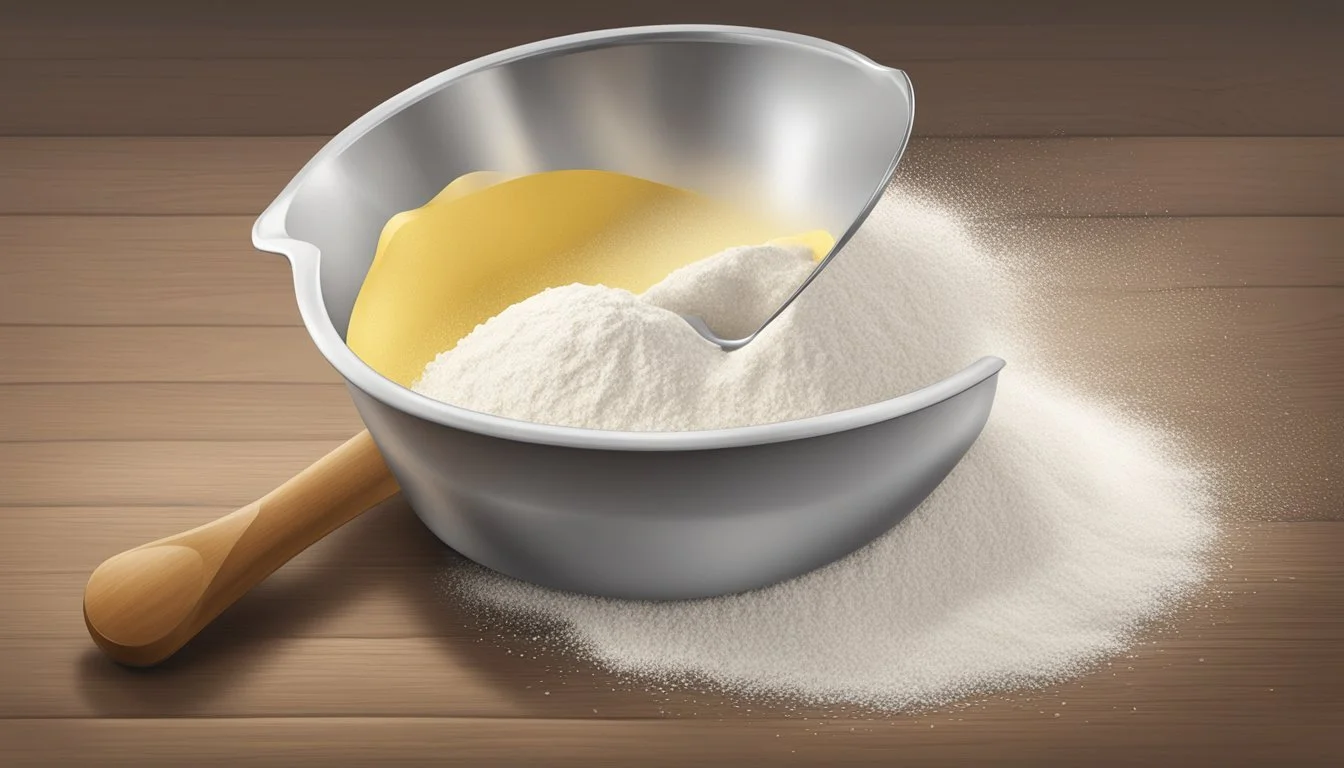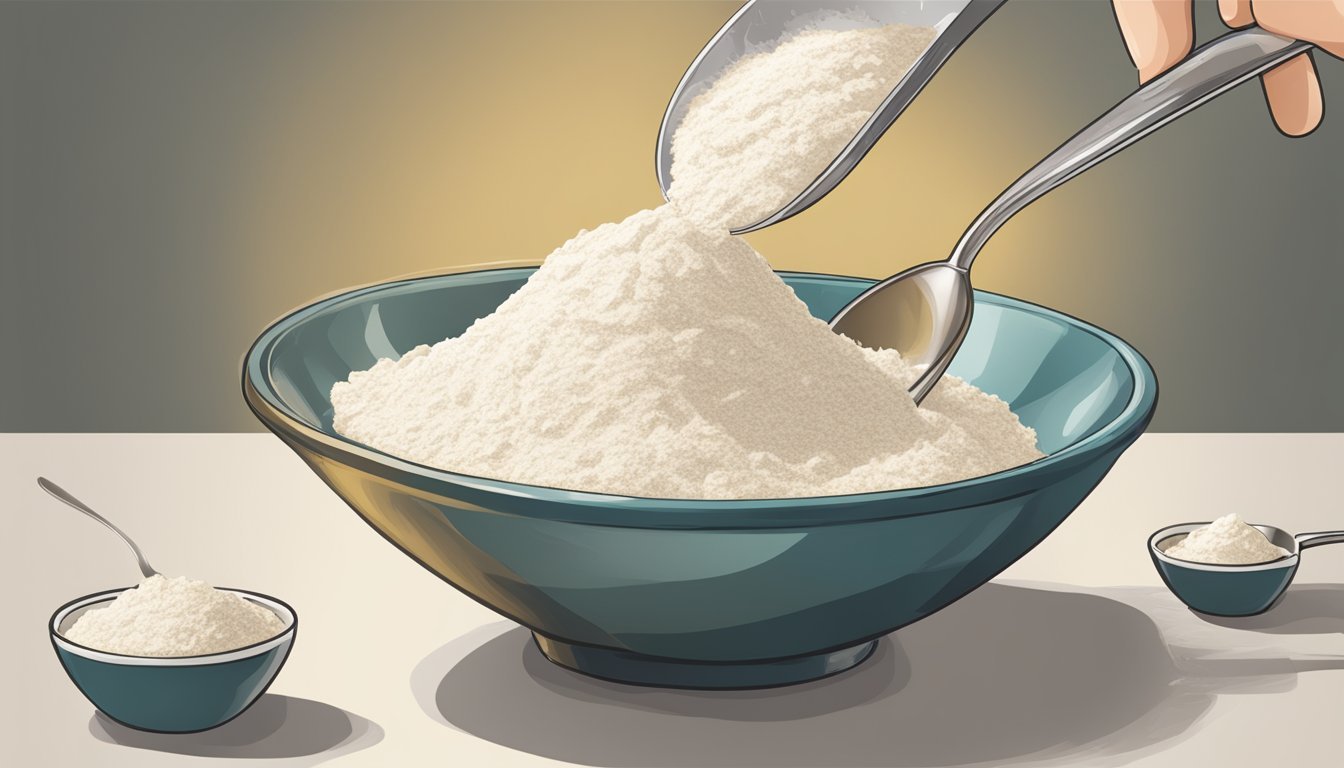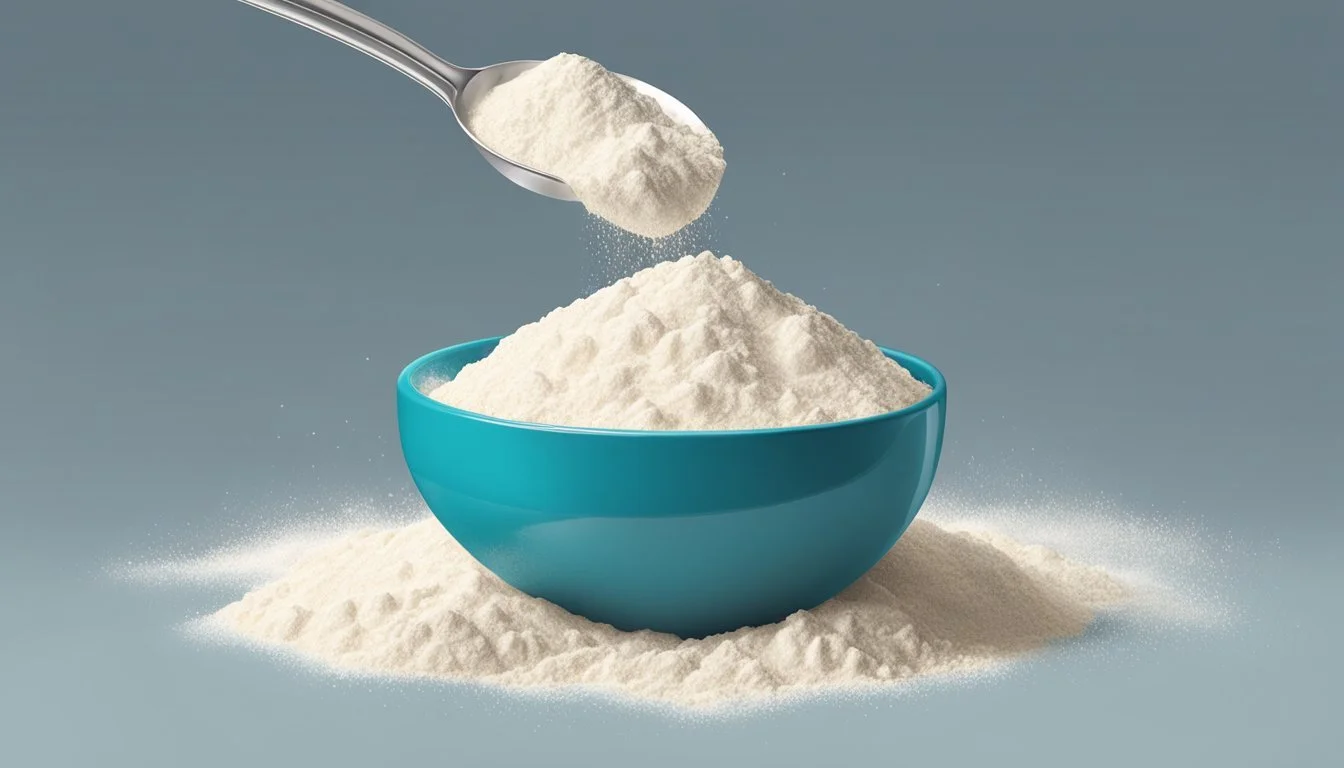How Many Tablespoons in a Pound of Self-Rising Flour
Accurate Measurement Guide
Determining the equivalence of tablespoons to a pound when dealing with self-rising flour is essential for accurate recipe conversions. Self-rising flour, a key ingredient in numerous baked goods, is already combined with a raising agent and, in some cases, salt. This pre-mixing ensures that the flour facilitates leavening in products such as cakes and biscuits without the need for additional baking powder.
The conversion, however, isn't straightforward due to the varying density of ingredients; a pound of self-rising flour translates to a different volume than a pound of other substances like sugar or butter. It's generally accepted that one pound of self-rising flour is approximately equivalent to 3 2/3 cups. Since there are 16 tablespoons in a cup, one can calculate the number of tablespoons in a pound of self-rising flour.
While the exact number may vary slightly depending on the specific brand and whether the flour has settled, a close estimate can be obtained using the standard conversion. This information proves particularly useful when adjustments are necessary in a recipe or when measuring equipment is limited.
What Is Self-Rising Flour?
Self-rising flour is a pre-mixed ingredient that primarily combines all-purpose flour with a specific amount of baking powder and salt, offering convenience and consistency for a variety of baking recipes.
Composition of Self-Rising Flour
The standard formula for self-rising flour consists of:
All-purpose flour: Serves as the base of self-rising flour.
Baking powder: Typically added at a proportion of 1 1/2 teaspoons per one cup of all-purpose flour.
Salt: A quarter teaspoon of salt is commonly included per cup of flour.
Homemade self-rising flour can be created using this formula for a convenient substitute for store-bought versions. Store-bought self-rising flour may also contain a few additional ingredients to improve texture and shelf-life, but the primary components remain the same.
Protein Content in Self-Rising Flour
The protein content in self-rising flour varies but is generally comparable to that of all-purpose flour, which sits at about 9-11%. This protein level is lower than bread flour but higher than pastry flour, making self-rising flour suitable for a wide range of baked goods like biscuits and pancakes. Whole wheat self-rising flour has slightly higher protein content due to the inclusion of whole wheat, which also contributes additional nutrients.
Making Self-Rising Flour at Home
Creating self-rising flour at home requires combining staple ingredients you likely already have. This makes it convenient to prepare a batch whenever needed, ensuring freshness and consistency in your baking recipes.
Ingredients for Homemade Self-Rising Flour
For a standard batch of homemade self-rising flour, the following proportions should be used:
All-purpose flour: 1 cup
Baking powder: 1 1/2 teaspoons
Salt: 1/4 teaspoon
These ingredients are whisked together to make the self-rising flour blend commonly used in baking.
Mixing Technique for Homemade Blend
To create a uniform mixture:
Measure 1 cup of all-purpose flour and place it into a large bowl.
Add 1 1/2 teaspoons of baking powder to the flour.
Include 1/4 teaspoon of salt to the mix.
Using a whisk, combine the ingredients thoroughly until they are evenly distributed throughout the flour. This technique ensures that the baking powder and salt are fully integrated, creating a consistent homemade self-rising flour blend for use in various recipes.
Using Self-Rising Flour in Recipes
When incorporating self-rising flour into your baking, it's key to understand its composition and how this affects your recipes. This convenience ingredient already includes leavening and salt, allowing for easier and faster preparation of certain baked goods.
Recipe Adaptations With Self-Rising Flour
Self-rising flour simplifies the baking process by combining all-purpose flour with baking powder and salt. The following adaptations are essential when using this flour:
Substitution Ratio: Replace each cup of all-purpose flour with 1 cup of self-rising flour.
Omitting Additives: Remove baking powder and salt from the ingredient list of the recipe, since they're already present in the self-rising flour.
Ingredient to Replace Amount of Self-Rising Flour Ingredient to Omit Amount to Omit All-purpose flour 1 cup Baking powder 1 1/2 tsp Salt 1/4 tsp
Tip: When substituting self-rising flour, one should take care not to overmix the dough to maintain a tender texture in the final product.
Popular Self-Rising Flour Recipes
Self-rising flour is a staple in southern recipes and provides the perfect structure for various baked goods. Here are some popular recipes where self-rising flour is the star:
Biscuits: Self-rising flour yields light and fluffy biscuits, a classic choice for breakfast or dinner.
Cakes and Quick Breads: It ensures a consistent rise, creating tender textures in simple cakes and varieties of quick breads.
Pancakes: For a quick, no-fuss breakfast, self-rising flour makes ultra-fluffy pancakes.
Pizza Dough: While not traditional, using self-rising flour for pizza dough can be an easy alternative for a faster homemade crust.
By understanding the properties and common uses of self-rising flour, bakers can streamline their process and produce consistent, high-quality results every time.
Converting Recipes for Self-Rising Flour
When adapting recipes to use self-rising flour, precision in the ratio of flour to leavening agent is crucial to maintain the intended texture and rise of the product.
Adjusting Leavening Agents
To substitute self-rising flour in a recipe that calls for all-purpose flour and a separate leavening agent, one must reduce or omit additional baking powder and salt. Given that self-rising flour typically contains about 1 1/2 teaspoons of baking powder and a 1/2 teaspoon of salt per cup, these amounts should be deducted from the recipe's original leavening requirements.
For example, if a recipe requires 4 cups of all-purpose flour, around 6 teaspoons of baking powder, and 2 teaspoons of salt, these additional leavening agents can be omitted when using self-rising flour, as it already incorporates the necessary components for the desired lift.
Notes:
When substituting with self-rising flour, do not add extra baking soda unless the recipe calls for it specifically, as this could affect the taste and rise.
Yeast-based recipes do not typically use self-rising flour due to differing rising mechanisms.
Determining the Correct Self-Rising Flour Ratio
The ratio of self-rising flour to other ingredients is key to achieving the intended outcome. A standard ratio to remember is that one cup of self-rising flour is equal to 1 cup of all-purpose flour, minus approximately 2 teaspoons, plus 1 1/2 teaspoons of baking powder, and 1/2 teaspoon of salt. When using self-rising flour, ensure that the recipe's expected flour volume aligns with the self-rising flour's leavening ability.
Conversion Ratio:
All-Purpose Flour Baking Powder Salt Equivalent in Self-Rising Flour 1 cup 1 1/2 tsp 1/2 tsp 1 cup Self-Rising Flour
For large quantities (e.g., 4 cups), multiply the single-cup ratio accordingly. Thus, 4 cups all-purpose flour would convert to 4 cups self-rising flour with no additional baking powder or salt needed.
Notes:
Accurate measuring is vital; do not round up or down as this could disrupt the balance of ingredients.
Self-rising flour contains baking powder that has a shelf-life; for best results, use fresh flour to ensure proper rise.
Understanding Measurement and Storage
Ensuring accuracy in measurement and maintaining flour freshness are critical for the success of any baking endeavor. Proper measurement techniques and optimal storage conditions can significantly impact the quality and shelf-life of self-rising flour.
How to Properly Measure Self-Rising Flour
When measuring self-rising flour, precision is key. To measure one pound:
Stir the flour in its container to loosen it.
Spoon the flour into a measuring cup until it is overfilled.
Using the back of a knife, level off the excess flour, achieving a precise cup measure.
Equipment Needed:
A stirring utensil, such as a spoon or whisk.
Measuring cups.
A leveler, such as the back of a knife.
Flour should not be compacted, as it leads to more than the intended amount being used, potentially affecting the recipe's outcome.
Storing Self-Rising Flour for Freshness
Proper storage of self-rising flour is essential to prolong its shelf-life and maintain quality. Flour should be kept in an:
Airtight container: This protects it from moisture, odors, and pests.
Cool and dry place: To prevent the flour from absorbing any moisture which can lead to spoilage.
For extended storage, some may store flour in the fridge to keep it fresh. Always check the expiration date on the flour's label and use it before this date, as self-rising flour contains leavening agents that lose potency over time.
Comparing Flours and Substitutions
In this section, the reader will discover the specific differences between self-rising flour and other types, as well as practical tips for flour substitution in recipes.
Comparison to Other Flours
Self-rising flour, distinct in its composition, includes a leavening agent and a touch of salt. It typically has a lower protein content than all-purpose flour, which is around 10-12%. This contrastingly affects the gluten formation, making it ideal for tender baked goods. It is often compared to pastry flour, known for its low protein content conducive to delicate pastries. Whole wheat flour, with its higher protein content, yields denser results. However, it's richer in nutrients due to the presence of bran and germ.
Flour Type Protein Content Ideal Use Case Self-Rising Flour Low (~8-9%) Quick breads, scones, pancakes All-Purpose Flour Medium (10-12%) Versatile, suitable for most recipes Pastry Flour Low (~9%) Pastries, pies, cookies Whole Wheat Flour High (~14%) Hearty, robust baked goods and breads
Substitution Tips for Self-Rising Flour
When substituting self-rising flour for all-purpose flour in a recipe, remember to omit the salt and baking powder normally added, since self-rising flour already contains them. For those needing to make self-rising flour, adding 1 and 1/2 teaspoons of baking powder plus 1/4 teaspoon of salt to each cup of all-purpose flour will replicate its qualities. To adjust for the variance in protein content when swapping flours, one might need to slightly alter the liquid ingredients for the desired consistency. Additionally, considering self-rising flour's lower protein, substituting with high-protein options like whole wheat flour may require the inclusion of a tenderizer like cornstarch.
To Make 1 Cup of Self-Rising Flour Ingredients Needed From All-Purpose Flour Combine 1 cup all-purpose flour with 1 and 1/2 tsp baking powder and 1/4 tsp salt
Baking Tips and Tricks with Self-Rising Flour
Using self-rising flour in baking can lead to delectable results, whether it's tender scones or perfect doughnuts. Understanding how to manipulate its properties can elevate both taste and texture in various recipes.
Achieving Desired Texture and Taste
One can create sumptuous cakes, flaky pastries, and tender quick breads with self-rising flour by adhering to specific techniques. To ensure a light and airy texture in baked goods such as cakes and cookies, avoid over-mixing the dough or batter once the wet and dry ingredients have been combined. Over-mixing can develop gluten, which may result in a tougher bake.
In recipes that do not call for yeast, like quick breads or scones, self-rising flour serves as an all-in-one raising agent. The baker should follow the amount of fat and sugar directed in the recipe carefully. Fat adds tenderness and flavor, while sugar not only sweetens but also contributes to browning and moisture retention. For every pound of self-rising flour, use the following conversions:
Quick Breads & Scones: Typically, 2 to 4 tablespoons of fat per cup of flour are sufficient.
Cookies: Adjust sugar according to taste and desired crispness, often ranging from 1/2 to 2 cups per pound of flour.
Common Mistakes to Avoid
Utilizing self-rising flour effectively means steering clear of common errors. One should not substitute self-rising flour for all-purpose flour in recipes that require additional leavening agents beyond what’s already included in self-rising flour. This could alter the final product significantly.
For more precise recipes, such as yeast breads, the use of self-rising flour is not recommended. If one must use it, they should omit the salt and baking powder from the recipe, as self-rising flour already contains these. Be mindful of the notes or comments in a recipe specific to the brand of flour being used, as they can affect outcomes.
Remember: Give attention to the details—how much fat, sugar, and the specific type of self-rising flour used can make a world of difference in your baking success.
Miscellaneous Uses of Self-Rising Flour
Self-rising flour is a versatile ingredient that extends beyond traditional baking, finding its place in various culinary applications. Here, we'll explore some unconventional and creative ways it can be utilized in the kitchen.
Alternative Non-Baking Uses
Self-rising flour can serve several non-baking purposes in the pantry. It's an excellent thickening agent for gravies and sauces, offering a slight leavening effect that can add a fluffy texture to the final dish. Additionally, it can be used to create a light, crisp coating on fried foods (What wine goes well with fried foods?). For example, self-rising flour is a common choice for achieving an airy batter when making fried chicken. Another innovative use is as a dusting flour for vegetables before roasting to encourage browning and create a delicate crust.
Creative Baking Ideas with Self-Rising Flour
In the realm of baking, self-rising flour is most often associated with traditional baked goods such as bread and cakes. However, its convenience and consistent results can lend themselves to imaginative recipes. One can make a simple and quick beer bread with a rich, hearty flavor by just adding beer to self-rising flour. Similarly, self-rising flour serves as a prime shortcut in recipes like cobblers where it provides a tender topping without extra mixing. It also simplifies pie-making; one can create a pie crust with ease, giving rise to flaky and delicious outcomes.
Integrating unique flavors into self-rising flour like pumpkin pie spice can yield seasonally inspired treats, adding a festive twist to classic recipes. The leavening agents in the flour will ensure consistent rising, resulting in satisfying textures in a variety of creative baked creations.
Frequently Asked Questions
When working with self-rising flour, understanding precise measurements is crucial, as these details make a notable difference in baked goods such as cupcakes, cornbread, and pancakes.
Conversion Between Self-Rising and All-Purpose Flour
Self-rising flour is a convenient blend for bakers, as it contains a raising agent and, sometimes, salt. In comparison to all-purpose flour, for every cup of self-rising flour, bakers often eliminate two teaspoons from a cup of all-purpose flour and add two teaspoons of baking powder and a quarter teaspoon of salt. This equates to the self-rising flour having a slightly less flour content due to this adjustment.
Common conversion questions include:
How do I measure a pound of self-rising flour? There are approximately 3 ⅓ cups of self-rising flour in a pound.
How do I substitute all-purpose flour for self-rising flour? To make a pound of all-purpose flour into self-rising flour, remove 6 teaspoons from the total and add 6 teaspoons of baking powder and 1 ½ teaspoons of salt.
Identifying and Addressing Common Issues
Bakers may encounter several issues when measuring and using self-rising flour. To avoid lumps, whisk the flour or sift it before use. Moisture can affect the flour's weight and volume, leading to inaccurate measurements or graininess in the baked goods. Bakers should store the flour in a cool, dry place to maintain its consistency.
Recipe notes and baking tips include:
Always use a spoon to scoop flour into a measuring cup and level it off with a knife for more accurate measurements.
To ensure even distribution of the baking powder and salt throughout the flour, whisk or sift together thoroughly before using in recipes.







